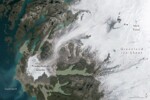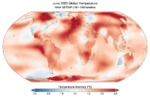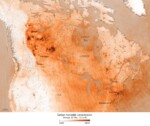
Tuesday, November 7th, 2023
Once it launches in early 2024, the NISAR radar satellite mission will offer detailed insights into two types of ecosystems—forests and wetlands—vital to naturally regulating the greenhouses gases in the atmosphere that are driving global climate change. NISAR, short for NASA-ISRO Synthetic Aperture Radar, is a joint mission by NASA and ISRO (Indian Space Research Organisation),

Sunday, October 22nd, 2023
A joint project of the French Government and Capture4Cad is using laser scanners from the Leica Geosystems’ BLK autonomous reality capture portfolio to create a comprehensive 3D model of the Citadelle de Besançon, France, a UNESCO World Heritage Site, while allowing visitors to immerse themselves in the area’s rich history. Digitalizing the citadel will help

Tuesday, October 10th, 2023
With applications ranging from agriculture to urban planning, the global aerial imaging market is poised for exponential growth. Experts predict that by 2032, the market size is set to surpass a staggering $25 billion. Expanding Applications Aerial imaging is finding applications in a diverse range of sectors. In agriculture, it aids in precision farming

Monday, September 25th, 2023
Methane is a powerful greenhouse gas and is the second-largest contributor to climate warming after carbon dioxide. A tonne of methane, despite its shorter lifespan of about 10 years in the atmosphere, can retain an astounding 30 times more heat than a tonne of carbon dioxide over the course of a century. This means that

Monday, September 11th, 2023
Harmful algae can endanger public health and coastal ecosystems and economies. Advances in satellite imaging are providing new ways to look at our living ocean. By the time they were over, a series of massive algal blooms along the west coast of Florida in 2020 would be linked to some 2,000 tons of dead marine

Monday, August 28th, 2023
NASA released the first data maps from its new instrument launched to space earlier in 2023, which now is successfully transmitting information about major air pollutants over North America. From its orbit 22,000 miles above the equator, NASA’s TEMPO, or Tropospheric Emissions: Monitoring of Pollution, is the first space-based instrument designed to continuously measure

Friday, August 11th, 2023
If global temperatures keep rising and reach 2 degrees Celsius (3.6 degrees Fahrenheit) above pre-industrial levels, people worldwide could face multiple impacts of climate change simultaneously. This is according to a NASA-led study that analyzed the projected impacts of such warming to understand how different climate effects might combine. A 2-degree rise in global temperatures is considered a

Monday, July 31st, 2023
More than halfway through the 2023 melting season, Greenland has seen a substantial transformation of its snow cover. Melting has been above average for much of the season, including on several days in June and July when melt was detected across 800,000 square kilometers (302,000 square miles)—up to 50 percent—of Greenland Ice Sheet’s surface, according

Monday, July 17th, 2023
June 2023 was the hottest June on record according to NASA’s global temperature analysis. Temperature anomalies reflect how June 2023 compared to the average June temperature from 1951-1980. GISTEMP, NASA’s global temperature analysis, is drawn from data collected by weather stations and Antarctic research stations as well as instruments mounted on ships and ocean buoys. NASA

Thursday, June 15th, 2023
As climate change increases the risk of wildfires across the globe, the spate of fires that hit Canada in May and June suggest that 2023 is on course to be the country’s worst fire season to date. These fires not only pose a serious threat to human life, wildlife the environment and property, they also
